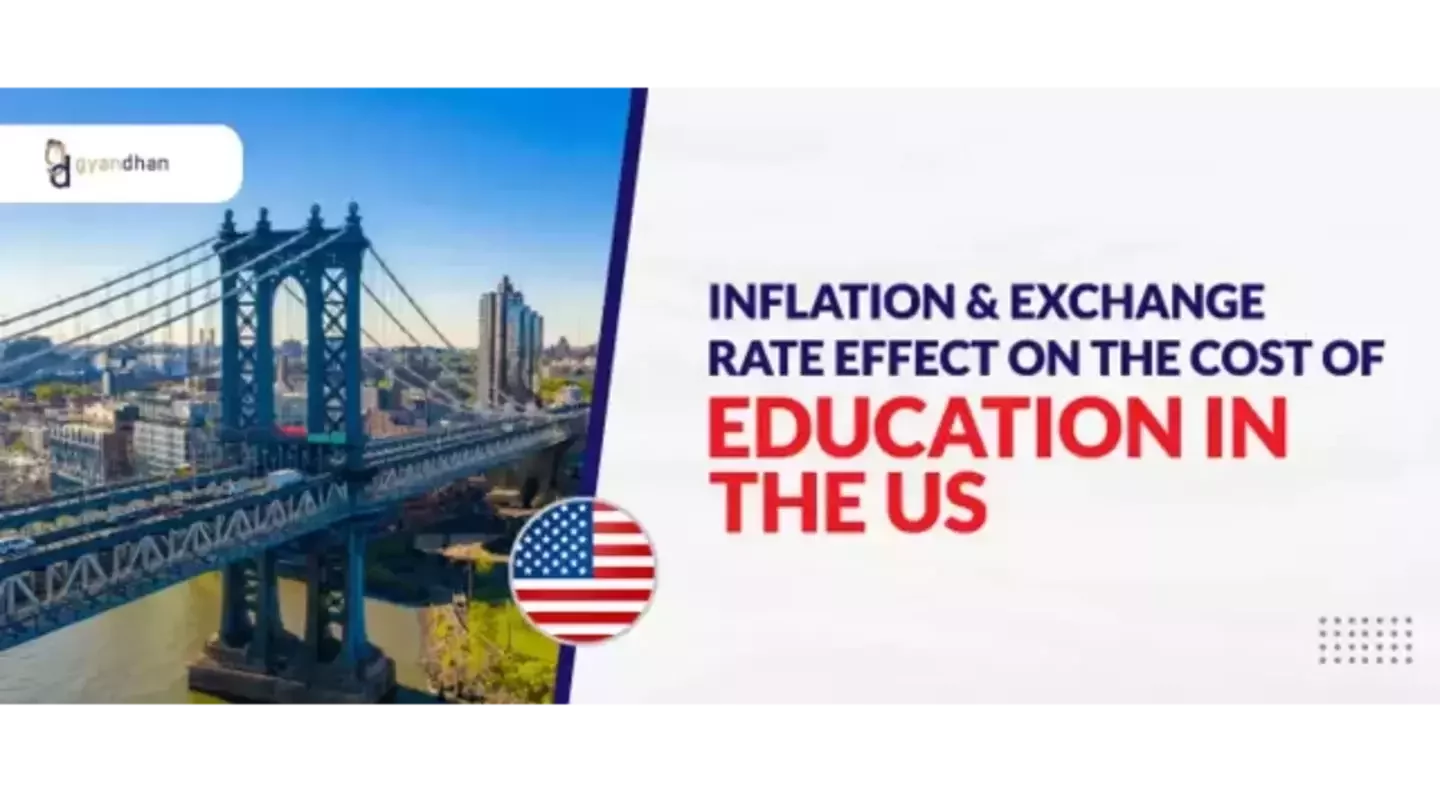Get instant loan offer suitable to your profile !


On this Page:
The falling rupee against the dollar has become a major concern for students wanting to go to the US for higher education. Read the full news here.

The cost of education in the US or for that matter any country abroad is directly affected by the currency exchange rates. There have been several instances in the past where a down sliding rupee has inflated the cost of education abroad. However, this time around the falling rupee against the dollar has become a major concern for students wanting to go to the US for higher education. Every year thousands of Indian students go to the US in search of quality education, multi-cultural environment, abundant employment opportunities and more.
Students take huge loans in order to cover the tuition fee and cost of living. As per Indian standards, the cost of living and education is pretty high in the US, and even a slight change in the rupee-dollar valuation can take a toll on the finances of those students planning to take abroad education loans. And in the midst of all of it every other day the rupee is plummeting to a new low against the dollar, and it is making the abroad education loan dearer for the students.
Check Your Education Loan Eligibility for Free

The rupee’s fall against the dollar is not something that one couldn’t have anticipated as the fall was pretty steady but the extent to which it fell couldn’t have been anticipated at all. In Mid-2021, the rupee against the dollar hovered somewhere around INR73 while in Mid-2022, it fell abruptly to around INR 78. A 6% fall is something that is going to severely impact the cost of lending, and it is all set to raise the quantum of loans that a student might take for pursuing higher education in the US.
To put it simply, for every 10 lakh spent on the abroad education loan, now an Indian student has to spend an additional INR 60,000. And roughly the cost of education at a top university can cost you around INR 60,00,000 to INR 70,00,000. So this would roughly translate to an increment of INR 3,60,000 to INR 4,20,000. The inflation is already high, and now the exchange rate is making education at the universities in the US a pretty uphill task for students.
Evaluate your Probability of Admission in US Universities

The cost of education in the US has witnessed an increase, and it is something that is going to affect both domestic as well as international students. The rising cost has raised concern about the future of education in the US as it is certainly one of the most favored locations globally. However, the US’s position might not remain the same as a report titled “College Tuition Inflation Rate” by EducationData.Org has highlighted that the rise in inflation in the education sector is way more than retail inflation. The retail inflation rate is well below the inflation in the education sector which makes it tough for the students to take up courses at universities in the US. In fact, the retail inflation rate is expected to be around 5.7-6.3% in India.
And in the US which is a way more stable economy has education inflation at 8%. What essentially these data suggest is that the rise in general prices is way less than the annual increment in the cost of education in the US. The average fee for students studying at private educational institutions in the US witnessed a steep increase in tuition fees. In 2010-11, the cost of education in these institutions was $31,700 while it increased to $37,600 in 2020-21. The steep increase in prices is evident in pretty much all top institutions in the US, and the exchange rate changes are going to make it even worse for international students.
In fact, the better the university, the higher the cost of education. Ivy League institutions have been notoriously known for having an overly high fee structure that makes it very tough for students without some sort of financial aid to take admission. As per the data from the National Centre for Education Statistics, the average undergraduate fees have risen from $15,895 in 2000-01 to $25,281 in 2019-20, a straight increment of around 37%. Even college-specific data suffices to prove that the rising cost of education in the US coupled with the depreciating rupee will have a long-term effect. So, in a nutshell, by taking everything into account it can be comfortably said that you might have to pay 10% more than usual due to the above-mentioned factors.

The COVID-19 pandemic brought the world to a crashing halt, and now the revival is taking a toll on all the governments across the globe. Just like other affected sectors, the education sector also faced the brunt of this, and the travel restrictions that followed severely impacted these institutions. The impact continued for the next year, and now the geopolitical turmoil fuelled by the Russia-Ukraine war has also affected global prices. From food prices to energy demands, all have been affected. These geopolitical events might not directly impact the tuition fee but they will certainly have a bearing on the overall cost of education.
In fact, May 2022 was perhaps the worst month in terms of retail inflation figures as it soared to a 40-year high of 8.6%. The rising inflation directly implies the fact that the value of the rupee will continue to depreciate, and it will affect the exchange rate as well.
If we look at the overall cost of education, it will also include the cost of living which is directly impacted by the skyrocketing inflationary trends. So, even if the universities in the US reduce the tuition fee, it will not be a panacea for sure, as you still have to bear the cost of living.
Read Also:
Evaluate your Probability of Admission in US Universities

Of late there has been a trend that has worried the universities and other stakeholders in the US. An increasing trend among international students is to move to the UK, Canada, Australia, etc instead of going to the US. The US government is even considering some big reforms in terms of eased immigration policies, fast processing of green card applications, and other reforms.
But in these times when the cost of education has increased so much, students can also consider the UK and Canada for similar prospects at a relatively lesser cost of education. It’s not like that as if there hasn’t been volatility in terms of the exchange rate of rupee to pound or Canadian Dollar but the overall impact doesn't seem to make much of a difference on the cost of education. These destinations can be an alternative to the US as even if there is an increase in the tuition cost, at least it will not be worsened by exchange rates.
Check Your Education Loan Eligibility

Ask from a community of 10K+ peers, alumni and experts
Trending Blogs
Similar Blogs

Network with a community of curious students, just like you
Join our community to make connections, find answers and future roommates.. Join our CommunityCountry-Wise Loans
Best Lenders for Education Loan

ICICI Bank

Axis Bank

Union Bank

Prodigy

Auxilo

Credila

IDFC

InCred

MPower

Avanse

SBI

BOB

Poonawalla

Saraswat